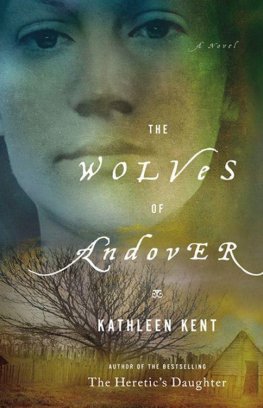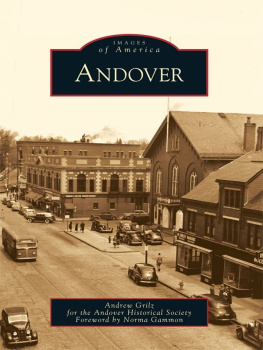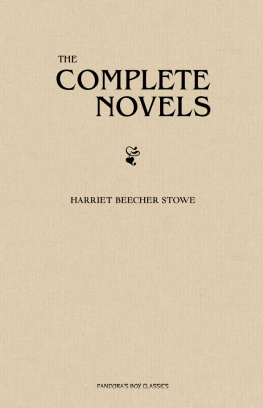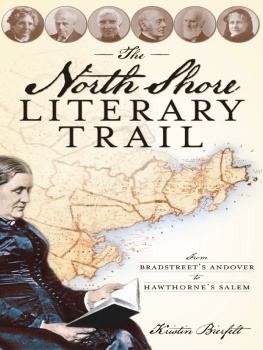
THE SPIRIT & SACRIFICE
OF A NEW ENGLAND TOWN
JOAN SILVA PATRAKIS

Published by The History Press
Charleston, SC 29403
www.historypress.net
Copyright 2008 by Joan Silva Patrakis
All rights reserved
Front cover image, top: Unidentified Civil War soldiers believed to be members of Andovers Company H. Courtesy of Andover Historical Society.
Front cover image, bottom: View of Andover, Massachusetts. Lithograph, circa 1856. Courtesy of Andover Historical Society. Back cover image: Courtesy of Phillips Academy Archive.
All images courtesy of Andover Historical Society unless otherwise noted.
First published 2008
e-book edition 2011
ISBN 978.1.61423.123.3
Library of Congress Cataloging-in-Publication Data
Patrakis, Joan Silva.
Andover in the Civil War : the spirit and sacrifice of a New England town / Joan Silva Patrakis.
p. cm.
Includes bibliographical references.
print edition ISBN 978-1-59629-437-0
1. Andover (Mass. : Town)--History--19th century. 2. Andover (Mass. : Town)--History, Military--19th century.
3. Andover (Mass. : Town)--Social conditions--19th century. 4. Massachusetts--History--Civil War, 1861-1865.
5. Virginia--History--Civil War, 1861-1865--Campaigns. 6. United States--History--Civil War, 1861-1865--Campaigns. I. Title.
F74.A6P38 2008
974.45--dc22
2008037234
Notice: The information in this book is true and complete to the best of our knowledge. It is offered without guarantee on the part of the author or The History Press. The author and The History Press disclaim all liability in connection with the use of this book.
All rights reserved. No part of this book may be reproduced or transmitted in any form whatsoever without prior written permission from the publisher except in the case of brief quotations embodied in critical articles and reviews.
To the brave men and women of Andover whose efforts on the battlefield and homefront
contributed to the preservation of the Union.
C ONTENTS

This publication is supported in part by a grant from the Andover Cultural Council, a local agency that is supported by the Massachusetts Cultural Council, a state agency.
A CKNOWLEDGEMENTS
My deep gratitude is extended to the many people and organizations that have contributed to Andover in the Civil War. Special appreciation is expressed to Andover Historical Society for the use of its manuscript and photograph collections. In particular, I thank Curator Andrew Grilz for his assistance in organizing and scanning photographs.
Also appreciated are the efforts of Ruth Quattlebaum, archivist at Phillips Academy, Andover, and James Sutton, director of Andovers Memorial Hall Library, who have permitted me to use images from their respective collections. A grant from Andover Cultural Council enabled me to research Andovers Civil War story.
The following organizations permitted use of images from their collected works: Harriet Beecher Stowe Center; the Schlesinger Library, Radcliffe Institute, Harvard University; Boston Public Library; and the Commonwealth of Massachusetts Art Commission. Massachusetts Historical Society allowed publication of excerpts from the diaries of E. Kendall Jenkins.
A special thank you goes to Ruth Brunquell, Andover artist, who came to my rescue with a painting of an 1860s Andover landmark, and to Eleanor Munch for providing additional information about her Civil War ancestor, Lewis Gat Holt. Deserving special recognition are Juliet Haines Mofford, Marilyn Burns and James Batchelder, fellow Andover historians who have shared their insights, knowledge and appreciation of Andovers unique history. In addition, Marilyn and Jim, and Robert Burns, gave their time and expertise in proofreading the manuscript.
For her patience and encouragement, I thank my editor, Saunders Robinson.
Last, but not least, I am grateful to my husband Michael and children Suzanne and Jeffrey for their support and for noticing and appreciating the effort required in writing a book.
I NTRODUCTION
On April 12, 1861, Fort Sumter fell to Confederate Rebels, igniting the terrible conflict between North and South. President Lincoln proclaimed war three days later, calling for seventy-five thousand volunteers to quell the rebellion. Andovers response was immediate.
News of war reached residents late on the morning of April 15 with the delayed delivery of the Boston newspapers. Within hours, the town was bustling with activity. A military company was being formed. Public meetings were scheduled to determine what course of action Andover would take in support of the Union. Women from all sections of town began meeting daily at South Church to sew garments and prepare necessary items for the soldiers. The spirit of the community was represented by huge flags thrown to the breeze by the Shawshin Engine Company and Ballardvales Whipple File Company.
Some men, who were anxious to serve their country immediately, volunteered with established military companies in Boston and neighboring towns. By April 16, seven residents were already en route to the war front with Company F of the Sixth Massachusetts Regiment, a unit from nearby Lawrence.
Town hall was filled to overflowing at public meetings. The womens gallery was so crowded that many of the ladies had to stand in the aisles or listen to the proceedings from outside the building. An enthusiastic display of patriotism filled the hall as male constituents cheered, swung their hats and waved their handkerchiefs in response to spirited speeches and stirring national anthems played by the Andover Brass Band.
The town voted unanimously to supply uniforms and equipment for the company. A bounty of seventeen dollars was awarded to volunteers and the poll taxes of each were remitted for the year. An allotment of fifty cents was paid for every days drill. In addition, the town agreed to provide aid to the families of married men. To accommodate the military company, town hall was converted to an armory.

A call to the citizens. Andover Advertiser, April 20, 1861.

The Shawshin Engine House was the first structure to display the American flag when word of the rebellion reached Andover. Courtesy of Andover Artist Ruth Brunquell.
A group, designated the Committee of Twenty-five, was chosen to raise and appropriate funds for the benefit of the soldiers and their families. At a town meeting on April 22, Peter Smith, one of three partners of the Smith and Dove Company, proposed soliciting subscriptions then and there as a show of faith to the soldiers. John Smith, on behalf of his brother and partner John Dove, pledged $3,000 to the cause. The esteemed manufacturers, owners of the nations first flax processing mill, were perennial benefactors to the town. John Smith encouraged every man to give something, no matter how little. His example inspired others, including the women, to give generously.
Next page














